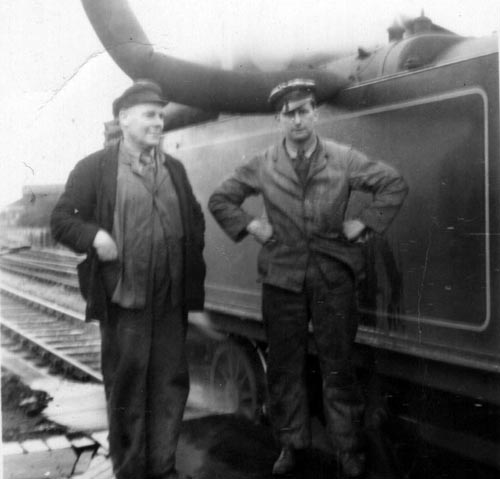
Some old Photos of the Somerset and Dorset
Joint Railway taken from my Childhood Collection
by Chris Newman
- a motley collection, but may
be of interest to someone -
Most of my photos were taken on the Highbridge Branch of the Somerset and Dorset which ran from Evercreech to Highbridge and then on to Burnham-on-Sea. This is because I grew up at Churchland Farm in Bason Bridge which was right beside the railway. In fact my bedroom overlooked the line. At the bottom of this page is a photo of Churchland Farm in relation to the railway and an old map which shows its location and the route of the Highbridge Branch. It also shows part of the main S&D line which ran from Bath to Bournemouth.
Everyone who had anything to do with the Somerset & Dorset seems to have happy memories of it. Countless books have been written about it telling some of the most wonderful and amusing tales. It's most endearing characteristic was, I guess the friendliness of the staff and the charming informality with which they went about their work. Added to that was the physical beauty of the railway and the countryside it ran through, and the quaint and somewhat ancient engines that operated on it.
My own memories of the S&D mainly associated with the Highbridge branch beside which I lived. Evercreech and Templecombe were (to me) distant places and visited very rarely. But I experienced that characteristic friendliness and charm of the line just the same, routinely running out of the house to wave to every train that passed, and always receiving a friendly wave in return. For a year or two I travelled home from my school at Hill Brow, taking the train from Highbridge to Bason Bridge during which time I got to know three drivers who regularly invited me to join them in the engine cab. These were Chummy Andrews (see below), Mr King and a red-headed driver whose name I don't recall. They were unforgettable experiences for a small (and very shy) boy.
There was a good variety of engines on the line. Most common were the ex-Midland Bulldog 3F 0-6-0s of which many lived their lengthy lives on the S&D. Almost as common but less loved (by the crews and by myself) were newer the LMS 4F 0-6-0s known as "Armstrongs", some of which were also built for the S&D. Special favourites were the ancient Midland Railway 0-4-4Ts, dating back to 1885 or thereabouts, the last of which was 58086 (see below). My favourite engines (looking back, now that they are all gone) were the MR and LMS 4-4-0s, but 50 years ago I would have given the 7F 2-8-0s that ranking. The 7Fs were, of course, unique to the S&D having been designed and built specially for the line but they were almost unknown on "the branch" and only once did I see one pass by (53807, sometime around 1956). The Ivatt 2-6-2Ts were too modern to be loved. So too were the BR 3MT 2-6-2Ts but I liked them both and they seemed to fit well into the scene. Not so the ex-GWR locomotives which intruded onto the S&D uninvited and unwelcomed, and which heralded the end of the S&D's existence.
But that is another story best told by others. We left Churchland in 1962 and moved to Brent Knoll and saw very little of the S&D after that, apart from a memorable trip along it in the great winter of 1962/63, and a short ride over Masebury Summit in 1963 or 64. The line closed in 1966 by when I was at university in Scotland and more interested in girls than trains!
Happily, part of the old line is
being preserved at Midsomer Norton where the railway station and section of
the S&D's main line is being restored by the Somerset
& Dorset Railway Heritage Trust. Of the older engines that once
worked the railway, only 7Fs 53808 and 53809 are now preserved along with Armstrong
No 44422. Some later comers are also preserved including BR 5MT No 73050, and
(I believe) at least one BR 9F 2-10-0. No doubt some of the preserved West Country
Pacifics ran over the S&D on occasions too. Sadly no Bulldogs have survived,
and saddest of all, none of the beautiful 4-4-0s.
Chummy Andrews and 58086
with grateful thanks to Chummy
for the two photos below, and for many happy memories of long-ago.
58086 was one of four or five ancient (ex-MR) tank engines that worked the Highbridge Branch. They dated back to around 1875, if I remember rightly (the year after my grandmother was born!) Other members of this very handsome class of locos (which were all shedded at Highbridge) were 58071, 58072 and 58073.

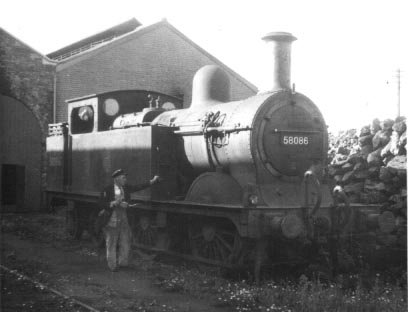
The 3F Bulldogs
The most common motive power on the Highbridge branch were the ubiquitous 0-6-0 3F Bulldog.
50 years later I still remember the BR numbers
of most of those that operated the line:
43194, 43419, 43201, 43204 (one of the first to go), 43216, 43218, 43248,
43427, 43436 and 43682.
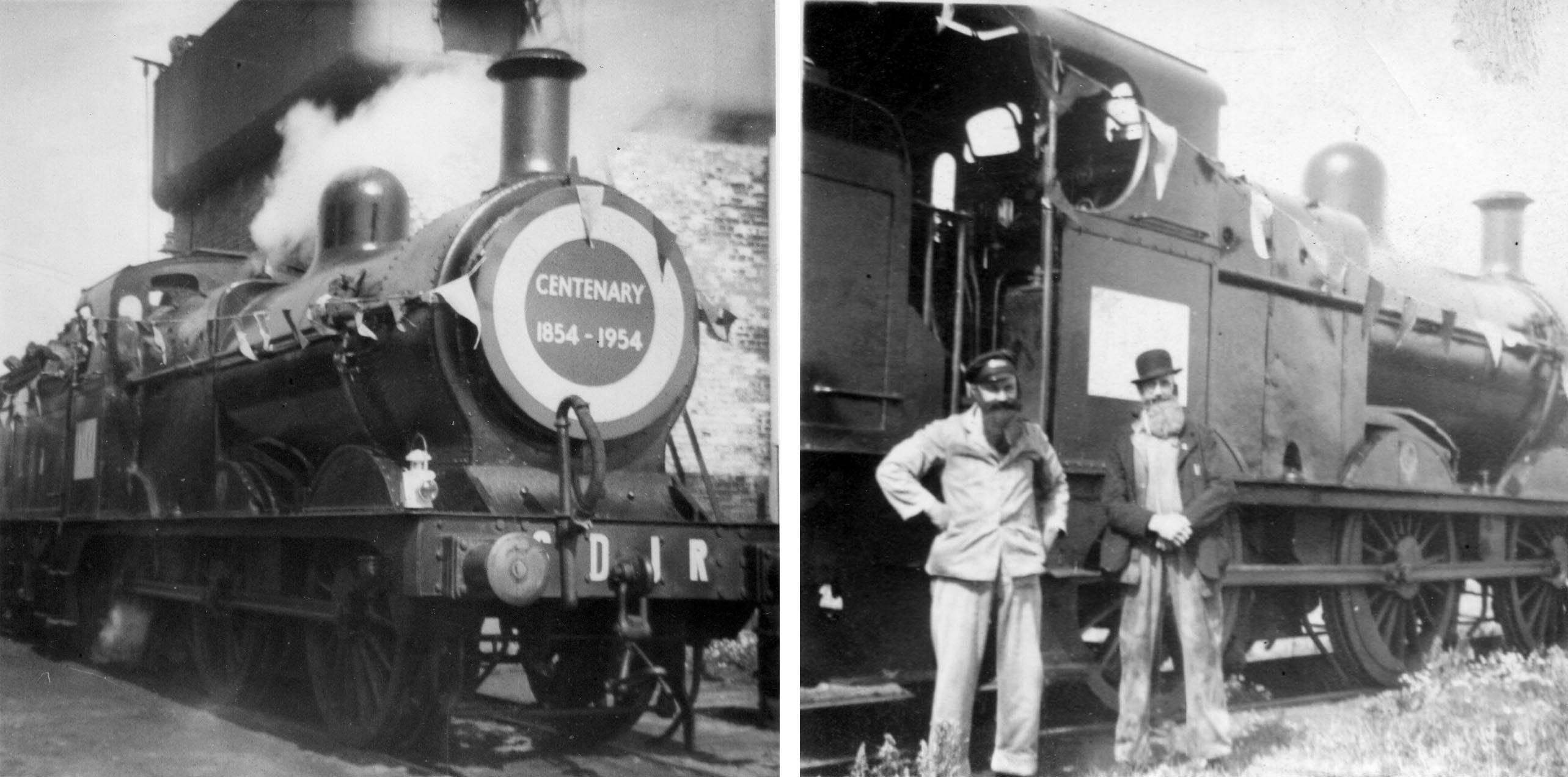

An early memory (before I was given my first camera) was the Centenary special that ran from Glastonbury to Burnham-on-Sea on 28t Aug 1954, hauled by Bulldog No 43201 (ex-S&D No 64). Photos above kindly provided by Colin Jackson:
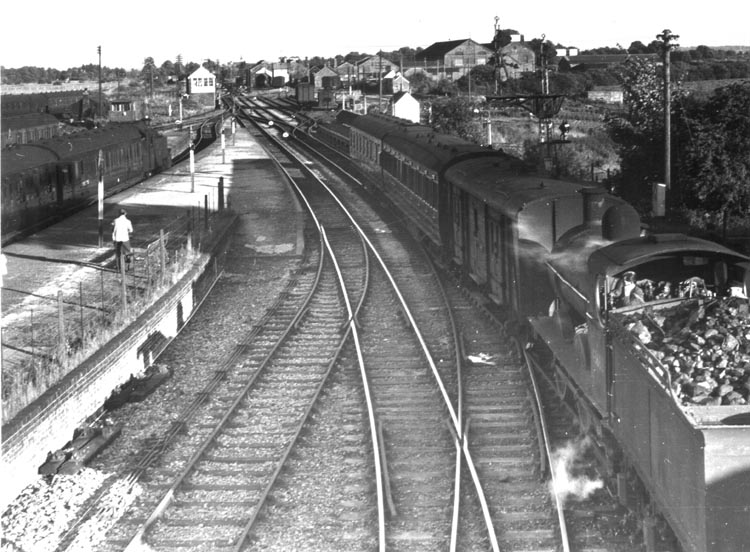
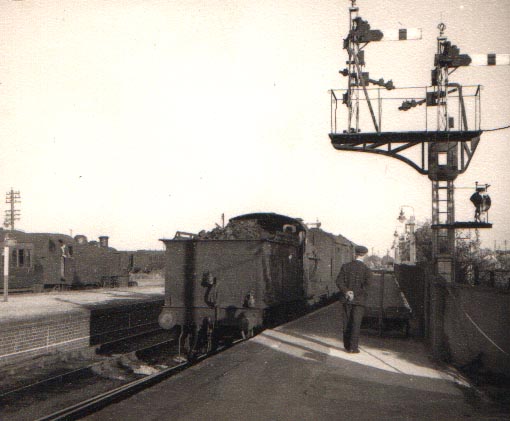
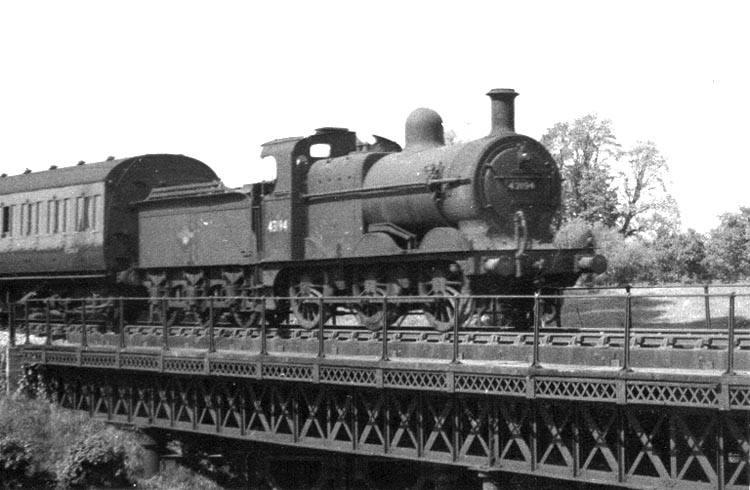
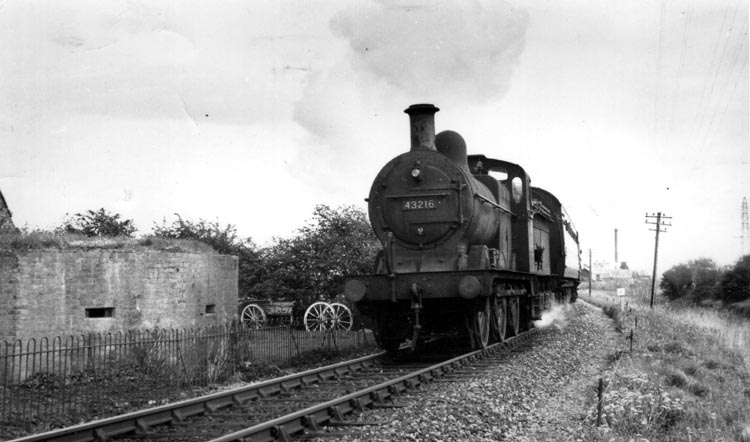
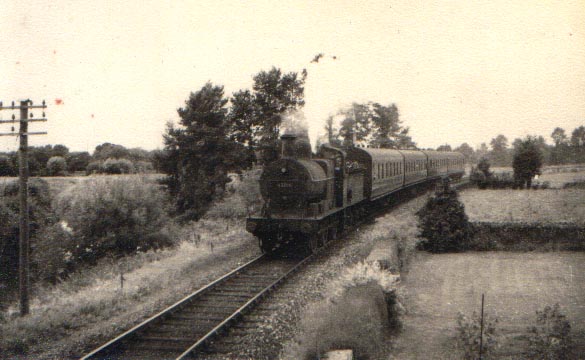
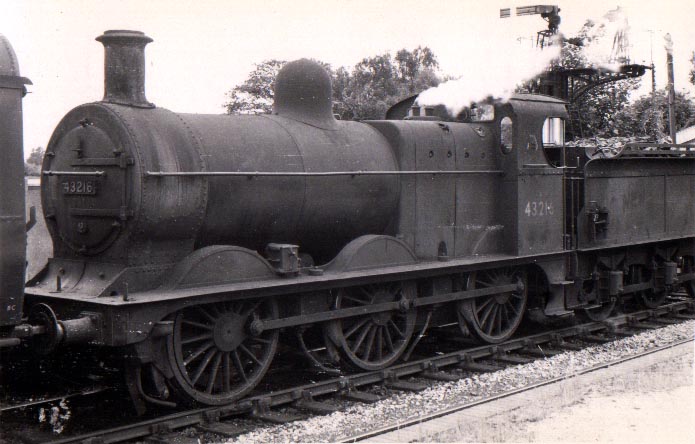
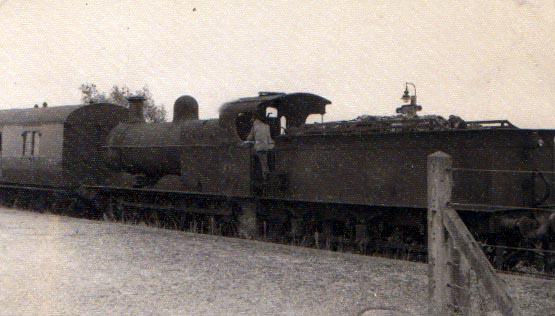
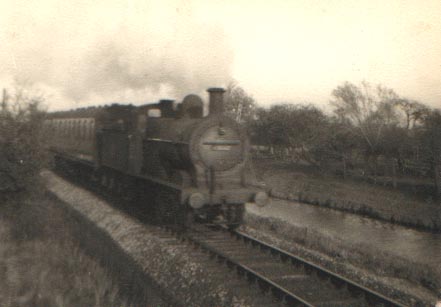
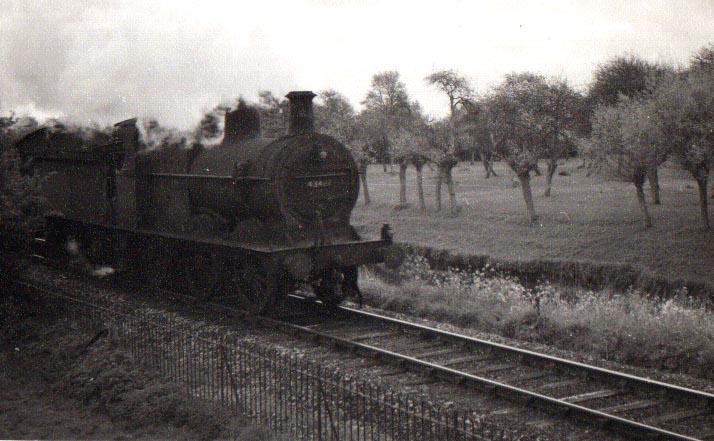
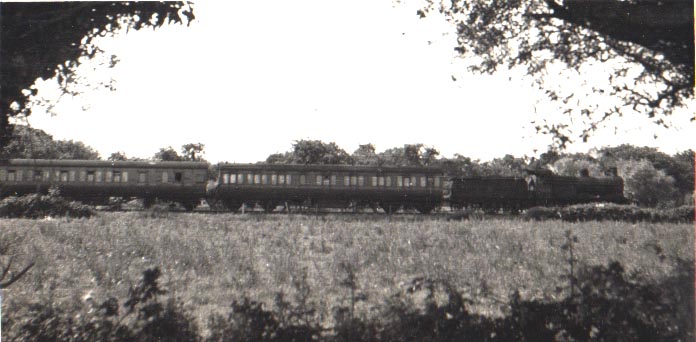
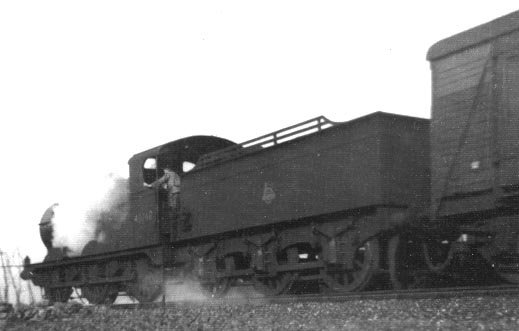
The 4F Armstrongs
Several 4F "Armstrongs" were built for the line, including (I think) 44422 which was subsequently rescued from Barry scrapyard and is now preserved. They were a bit stronger than the older 3Fs but were a typical Derby design with many deficiencies. Besides the obvious shape difference compared to the 3Fs (the higher pitched boiler), their sound was also quite different - the exhaust being more muffled.

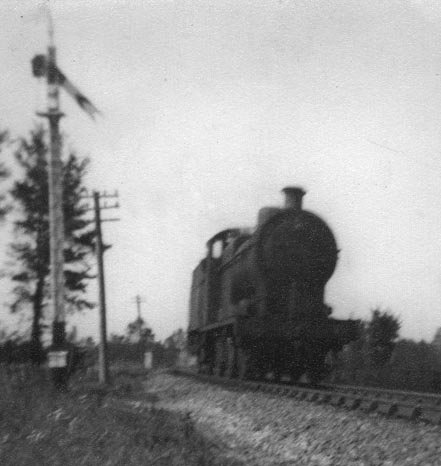
The Ivatt 2MT Tanks
The Ivatt 2MTs were ideal locomotives for
the Highbridge Branch, being small, efficient and incorporating many "modern"
features.
Those that I remember included 41248, 41296, 41301 (I think) and 41304.
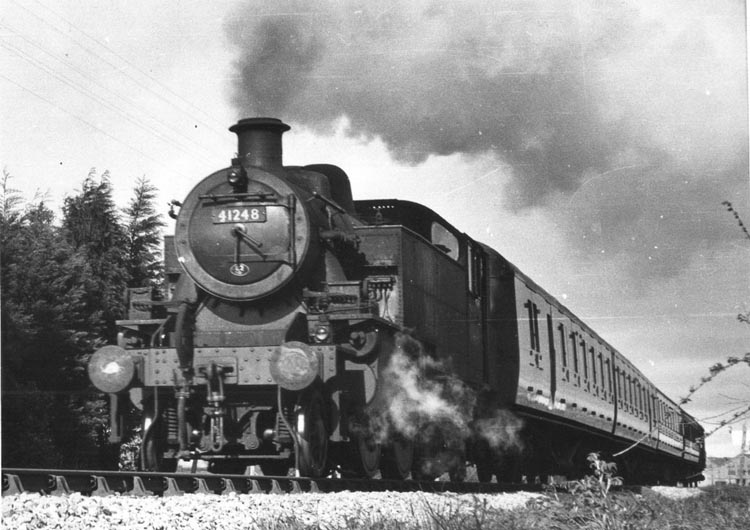
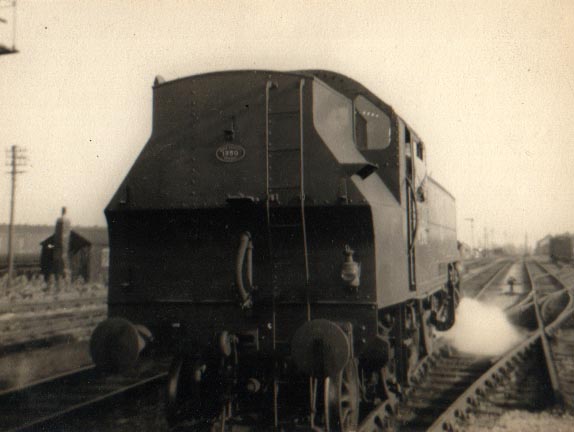
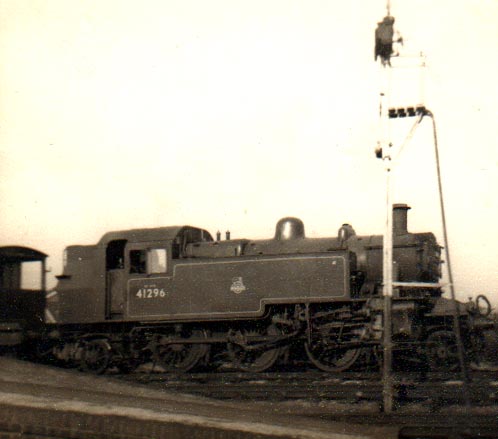
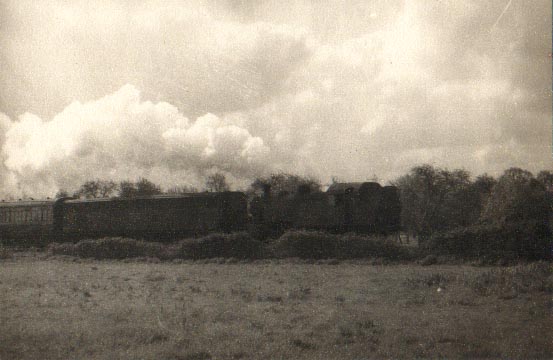
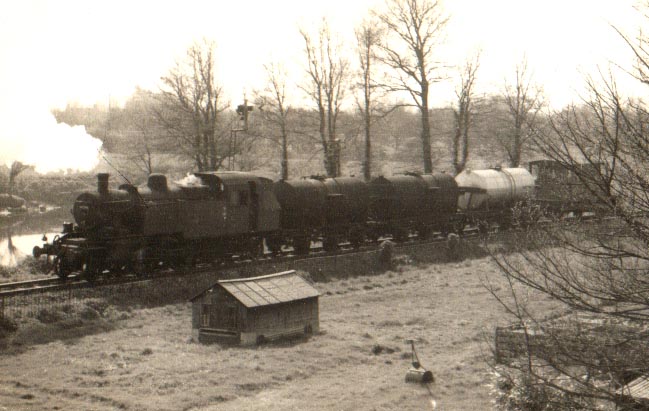
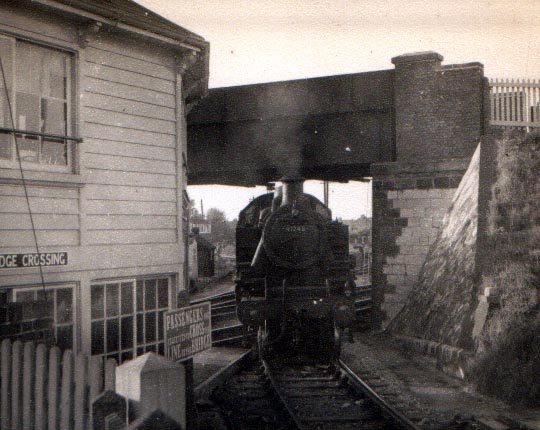
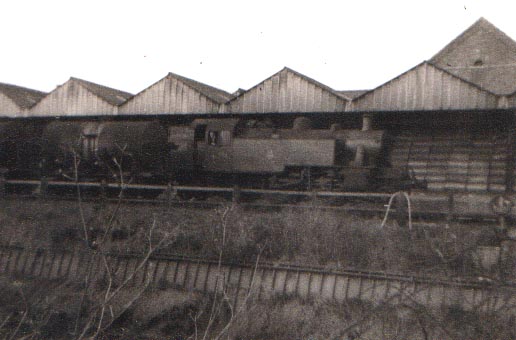
The Standard 3MT Tanks
The BR 3MT tanks were slightly larger engines than the LMS 2MT, but similar in all respects. I will always remember being given control of the regulator of 82035 and driving from the platform in Highbridge over to the shed for stabling, courtesy of the kindly Driver King.
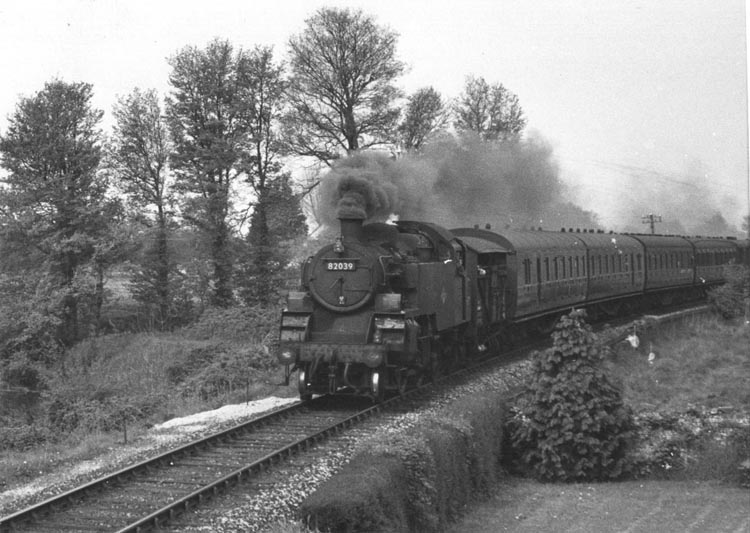
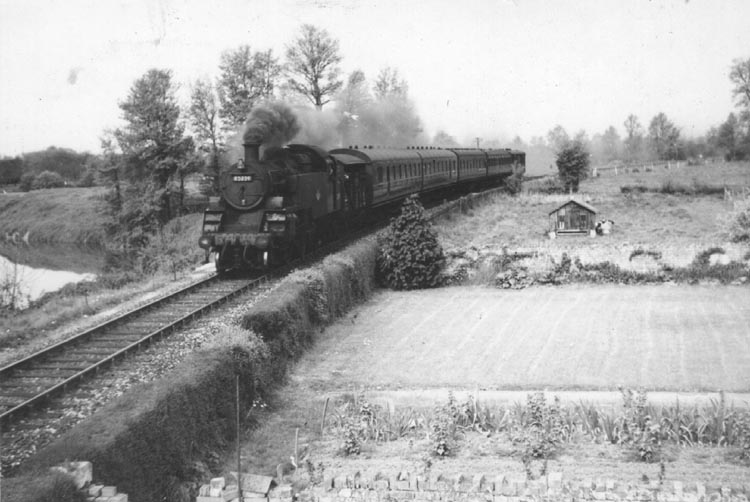
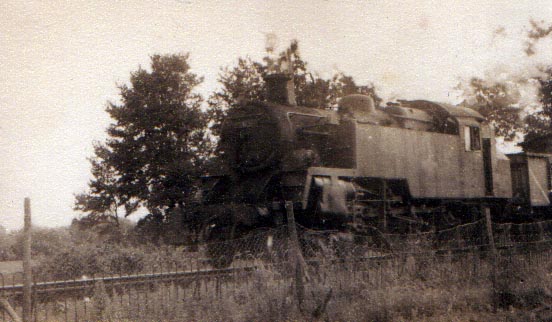
The "Burnham Branch"
The Burnham Branch extended two or three miles westwards from Highbridge, requiring a diamond crossing over the GWR main line and a gated level-crossing over the main A38 trunk road. The Burnham line was a key element in the original planning for S&D and was built with the expectation of picking up passengers from the paddle-steamer ferries from South Wales and transporting them to the south coast of England. The passengers never eventuated and by the 1950s Burnham branch was used mostly for carrying summer excursion traffic only. It was a fascinating line that ran alongside the wharfs of the River Brue and ended in a small station close to the sea-front at Burnham.
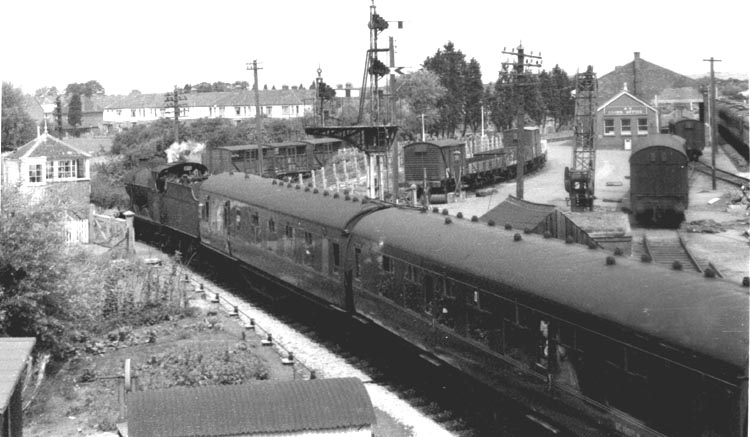
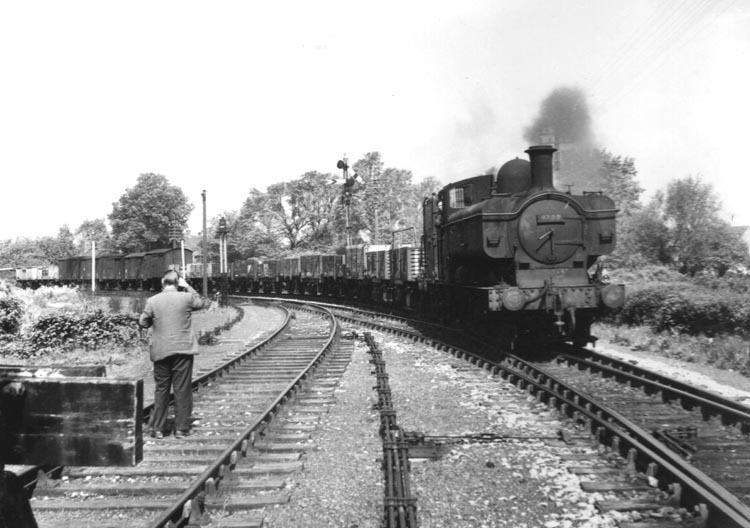
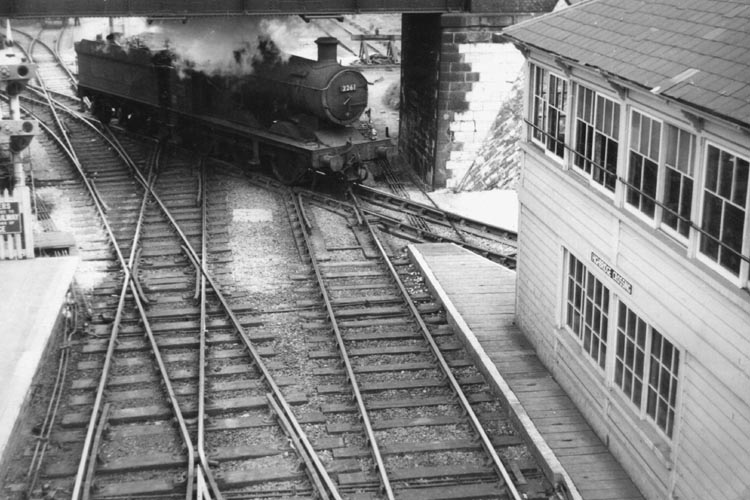
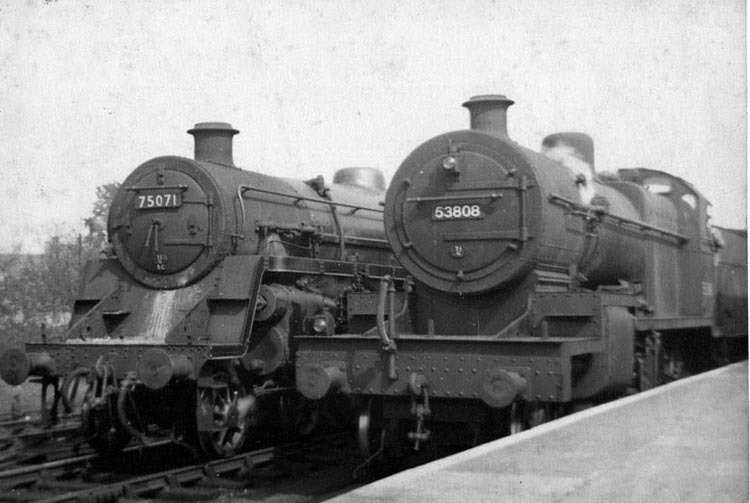
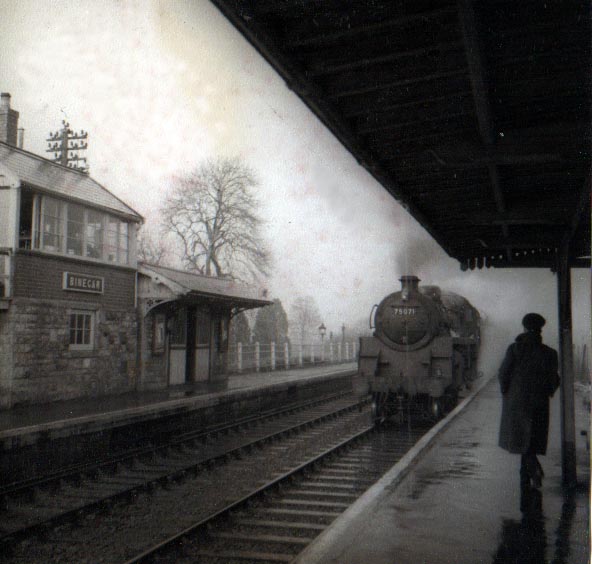
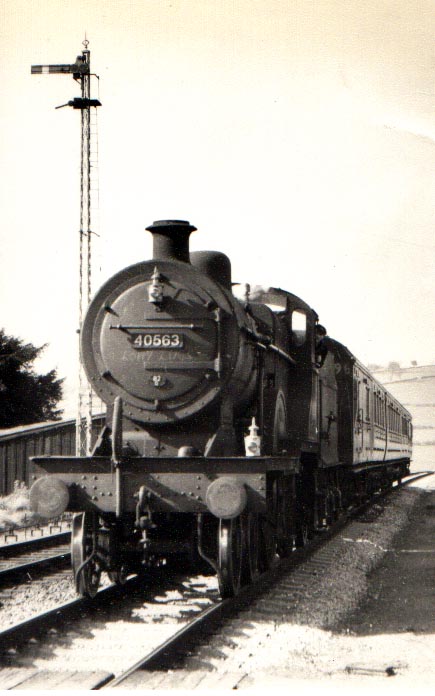

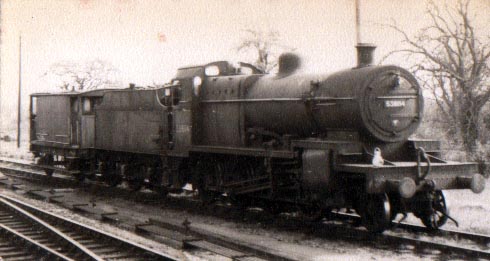
One of the last journeys that I had on "the branch" (perhaps the last, since it was after my parents moved from Bason Bridge) was in that amazing cold winter of 1962/63 which saw snow covering the land. When my friend Richard Synge and I heard about the dramas on the S&D in the Mendips, we thought we'd go and have a look-see. We took the train from Highbridge (behind an Ivatt 2-6-2T) expecting to get to Evercreech, but got only as far as West Pennard where we were told to disembark because the train could go no further. So Richard and I decided to walk from there to Shepton Mallet which we managed without drama, though we were astonished at the massive depths of the snow drifts beside the road. Our disappointment when we got to Shepton to find no trains running was short-lived because it wasn't long before a snow plough arrived and gave us a vivid demonstration of its driving force by rushing back and forth through the station (blasting snow everywhere) and thence over the viaduct and up the hill beyond, getting stuck and having to repeat the exercise. I recall there were three engines forming the ploughing team - a Jinty in front, and something bigger (perhaps a Standard 5) behind, and an Armstrong in the rear.
I had my newly purchased and long-saved-for Grundig portable tape recorder with me and recorded some of the sounds, but I suspect my old tapes would be useless now even if I were able to find them. I also had my old 2¼ x 2¼ Ziess-Ikon camera which happened to have a colour slide film in it (most unusually because I could barely afford b&w film and had to do my own printing to save cost!). I took only five photos of the trip as shown below.
Below: Interloper GWR Class 2251 0-6-0 No 3210 stands in Highbridge Station after bringing in a train from Evercreech.
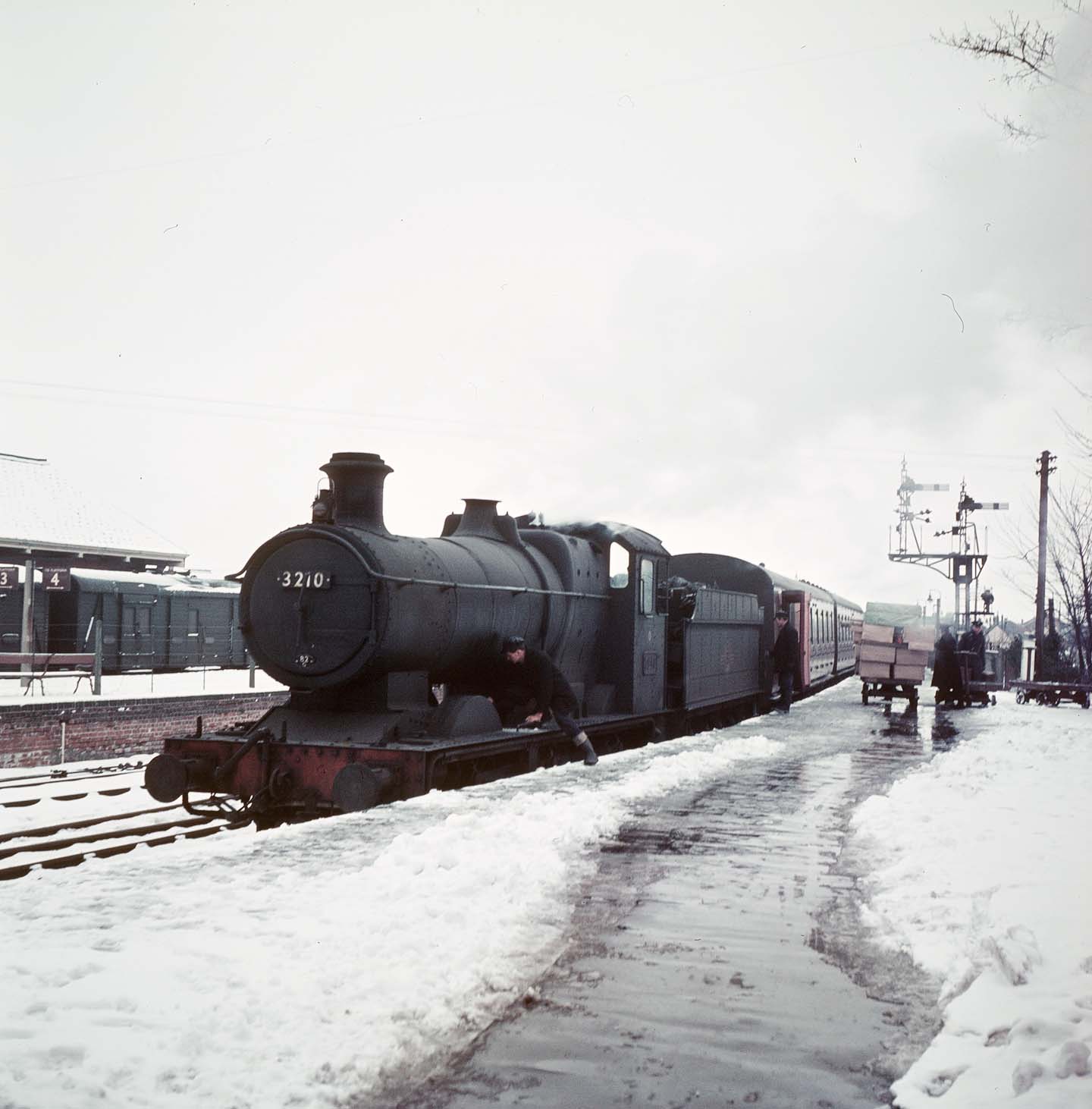
Below: ex-LMS 2-6-2T No 41304 hurries across the Somerset plains, somewhere in the vicinity of Edington.
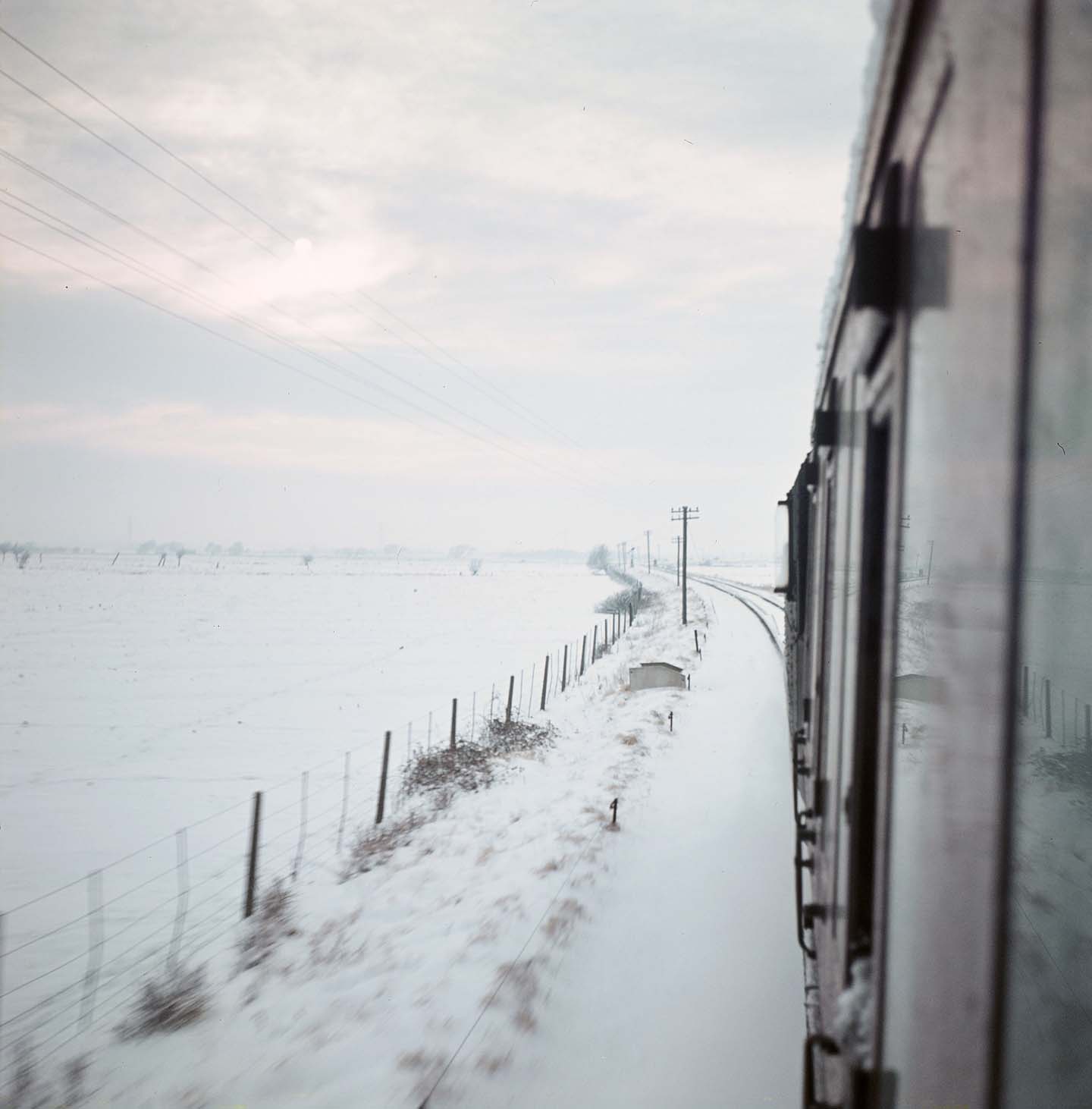
Below: End of the journey. The train could go no further because of snow drifts. 41304 stands at West Pennard, from where we had to walk to Shepton Mallet.
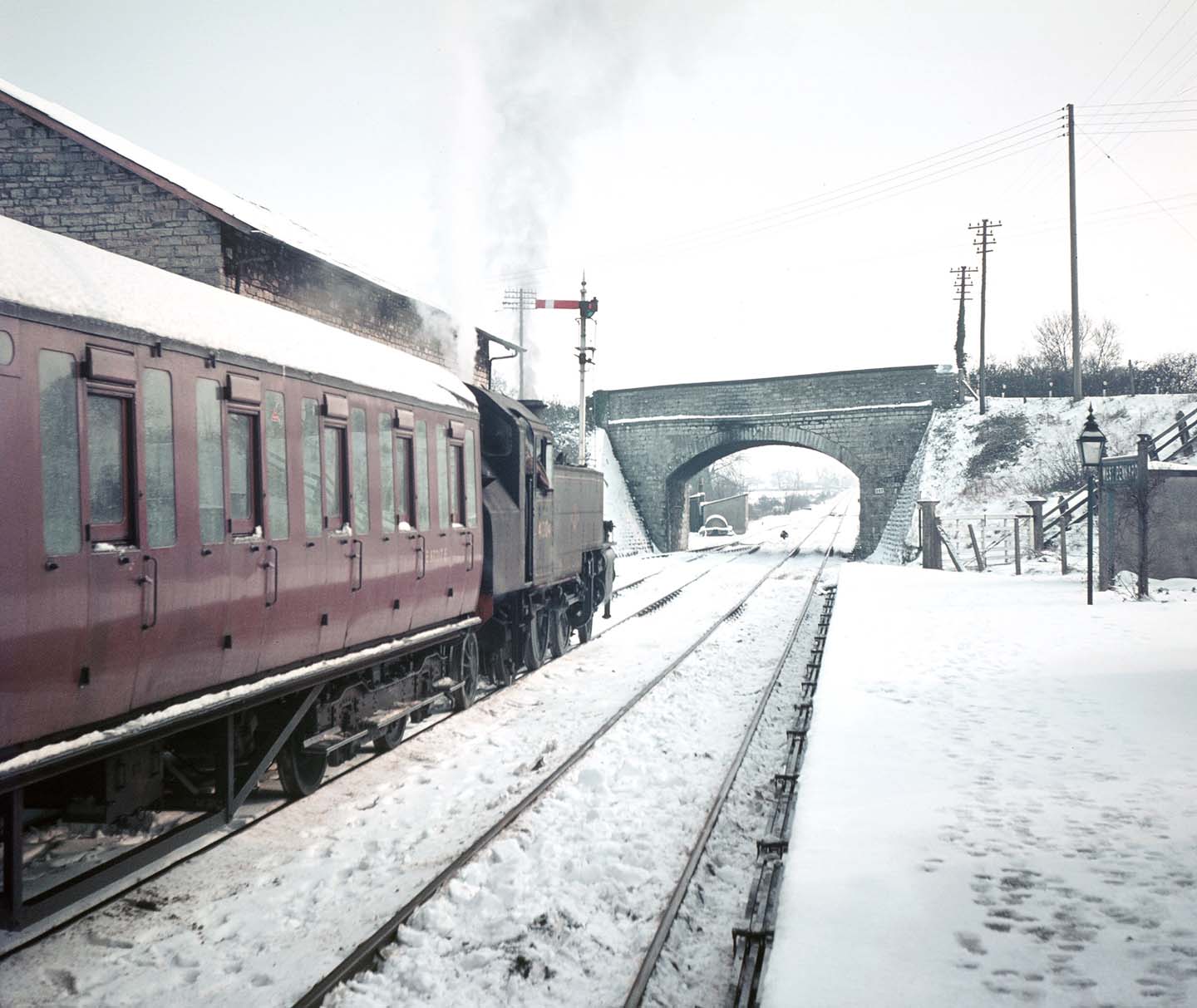
Below: Shepton Mallet station awaiting the arrival of the snow plough.
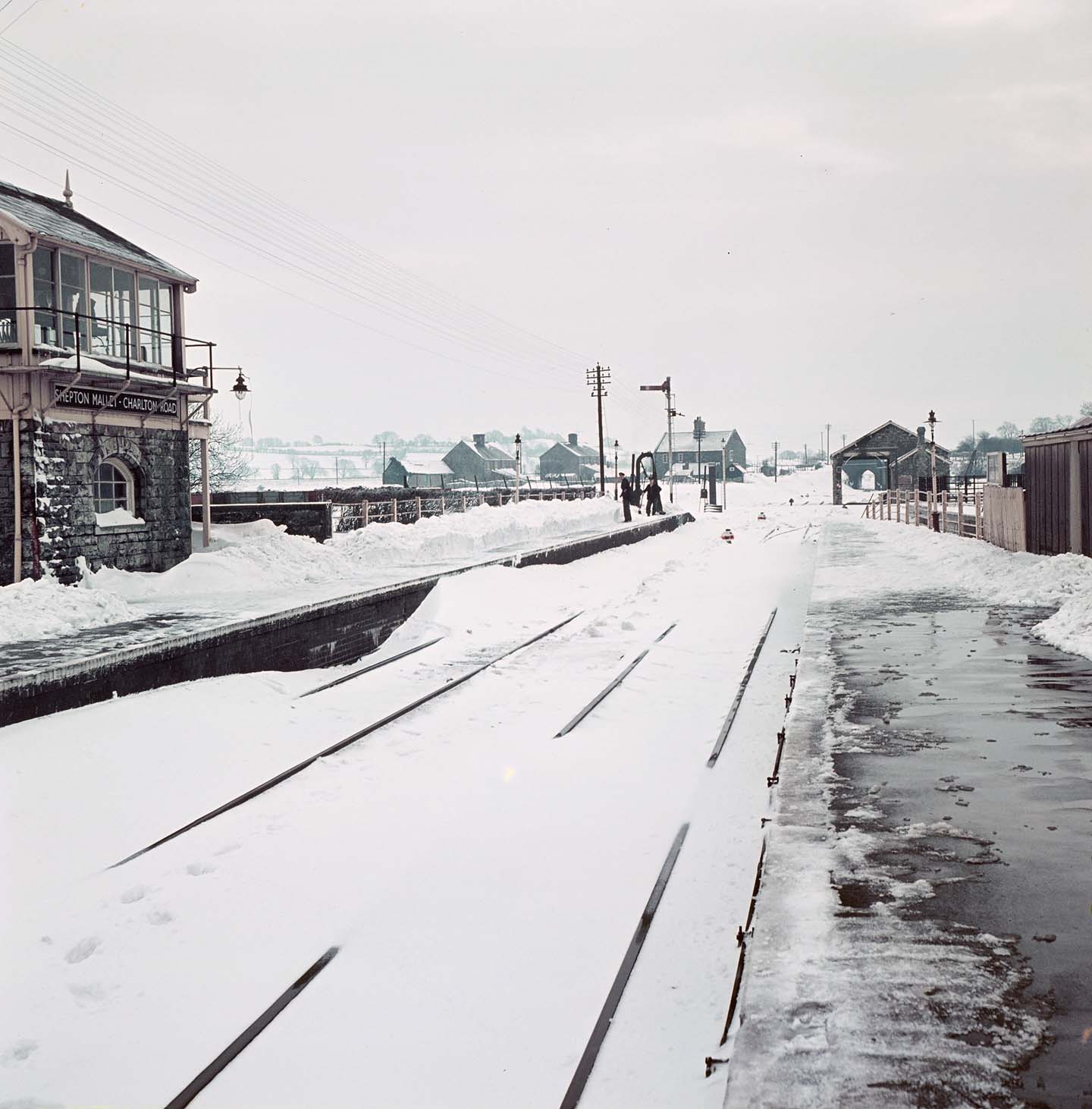
Below: Snow plough at Shepton Mallet with the weight of ex-LMS Jinty 0-6-0T No 47539, a BR 5MT and a ex-LMS 4F 0-6-0. Is the signal being passed at danger?
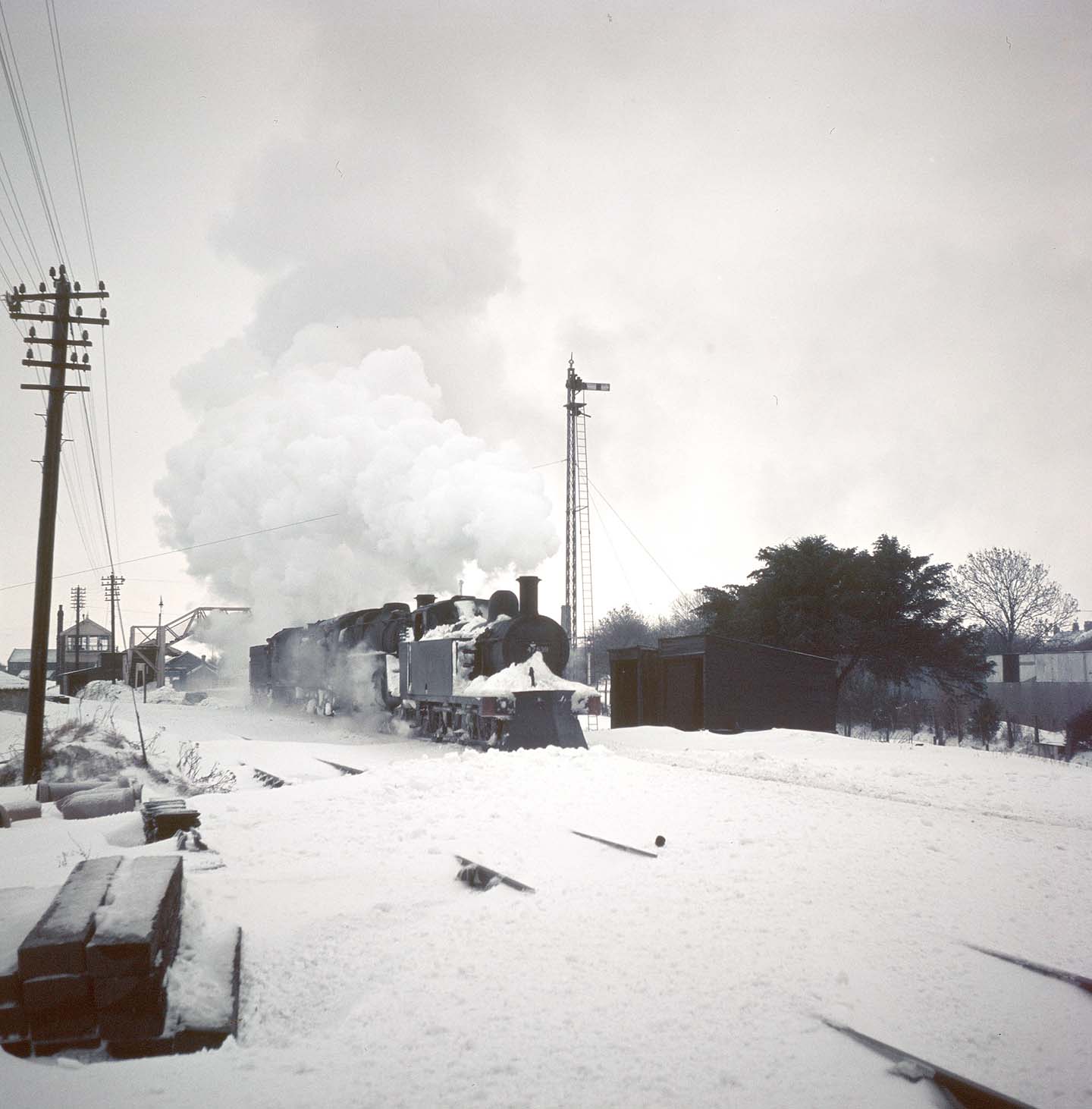
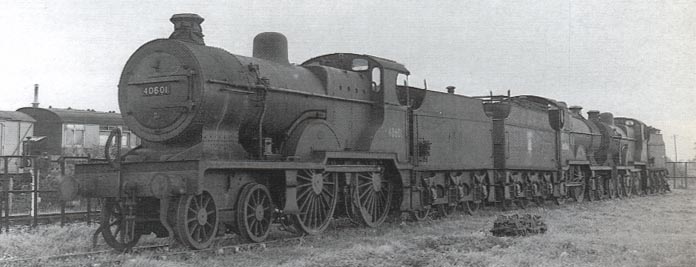
The old LMS 4-4-0s were the most elegant locomotives to use the line and they were my favourite locomotives (with the possible exception of the 7Fs). They were beautiful machines - elegant to look at and lovely to listen to with their muffled exhaust, ringing coupling rods and ambling gate. My favourites amongst them were 40509 (ex-MR with 7'-0" driving wheels) and 40700, the last of the LMS class.
I hasten to explain that this is not one of my photos. I've copied it from Derek Phillip's excellent book "Working Somerset & Dorset Steam" (1990 Derek Phillips/Fox & Co) and hope that he won't object. I have copied it because it recalls a poignant memory of the day I walked back from Highbridge along the footpath to the railway line and saw this string of 4-4-0s in the Works yard. I walked back along the track to take a close look at them (in some trepidation because I was on railway property where I wasn't supposed to be) before walking home despondently thinking that I'd seen the last of these beautiful locomotives. But happily they came back to life for a few more years of work. Derek Phillips puts the date as October 1956 - rather earlier than I would have guessed. The engines are 40601, 40696 and 40698 - all regular if not frequent visitors to the Highbridge branch (40601 was probably the most often seen and ridden on!).
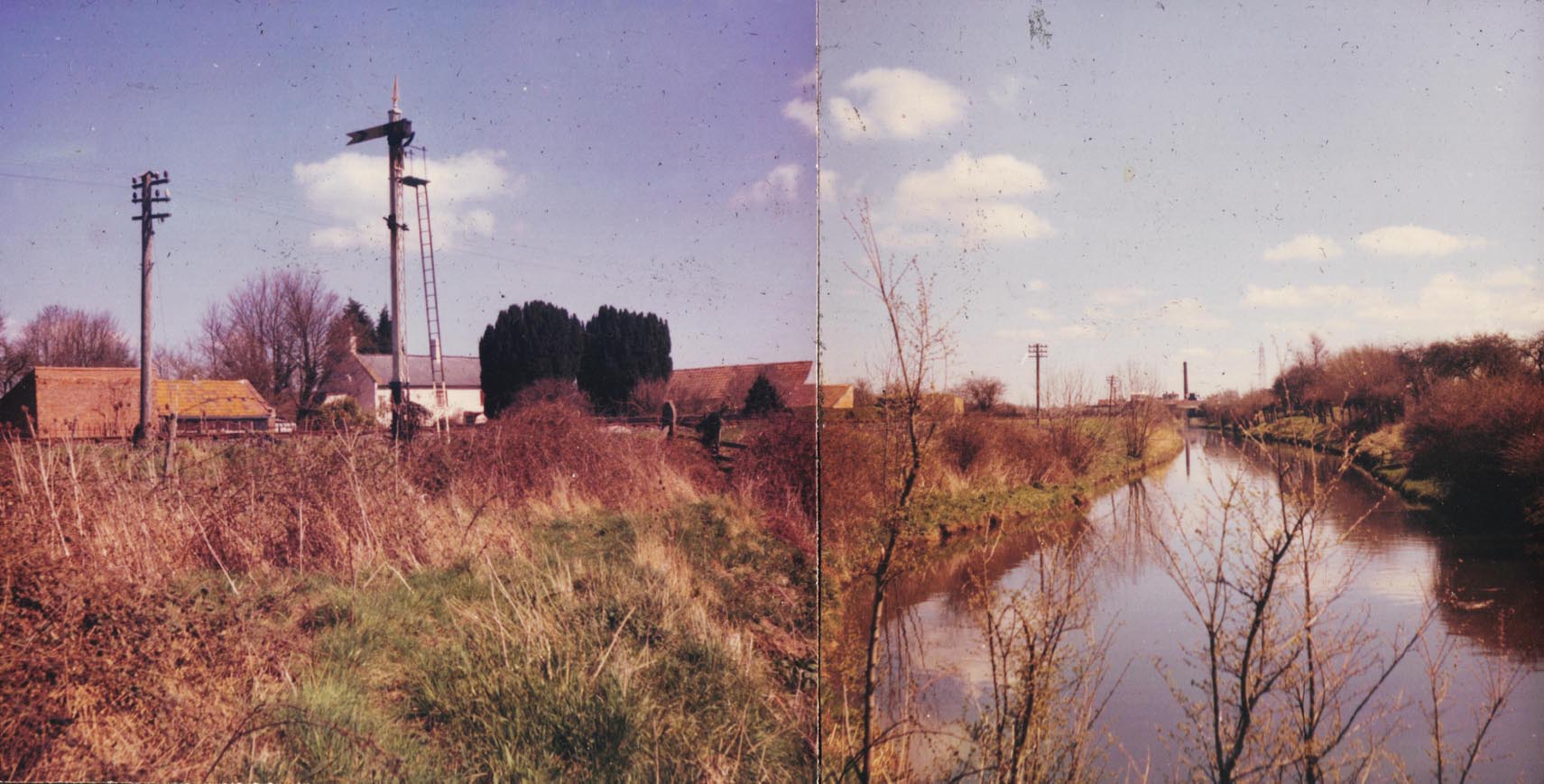
During my childhood, I lived in a farm called Churchland Farm at the end of Newman's Lane at Bason Bridge, adjacent to the Highbridge Branch of the S&D. The photo above shows the house in the background behind the yellow distant signal. To the right is the River Brue, and in the distance Bason Bridge station and milk factory.
The three mile branch from Highbridge to Bason Bridge remained open to service the factory for several years after the rest of the railway closed. The line was finally closed in the early 1970s when the M5 motorway was built across the tracks after the Ministry of Transport refused to countenance the cost of a bridge to span over it. The milk factory closed shortly afterwards.
The location of Churchland Farm is shown on the map below which also shows the principal stations on the branch - Burnham-on-Sea, Highbridge, Bason Bridge, Edington, Shapwick, Ashcott, Glastonbury, West Pennard, Pylle and Evercreech Junction. I was surprised to discover in 2003 that my ancestors once owned the estate of Evercreech Park (now Evercreech Park Farm) which is located at the other end of the Highbridge branch, less than a mile from Evercreech Junction.
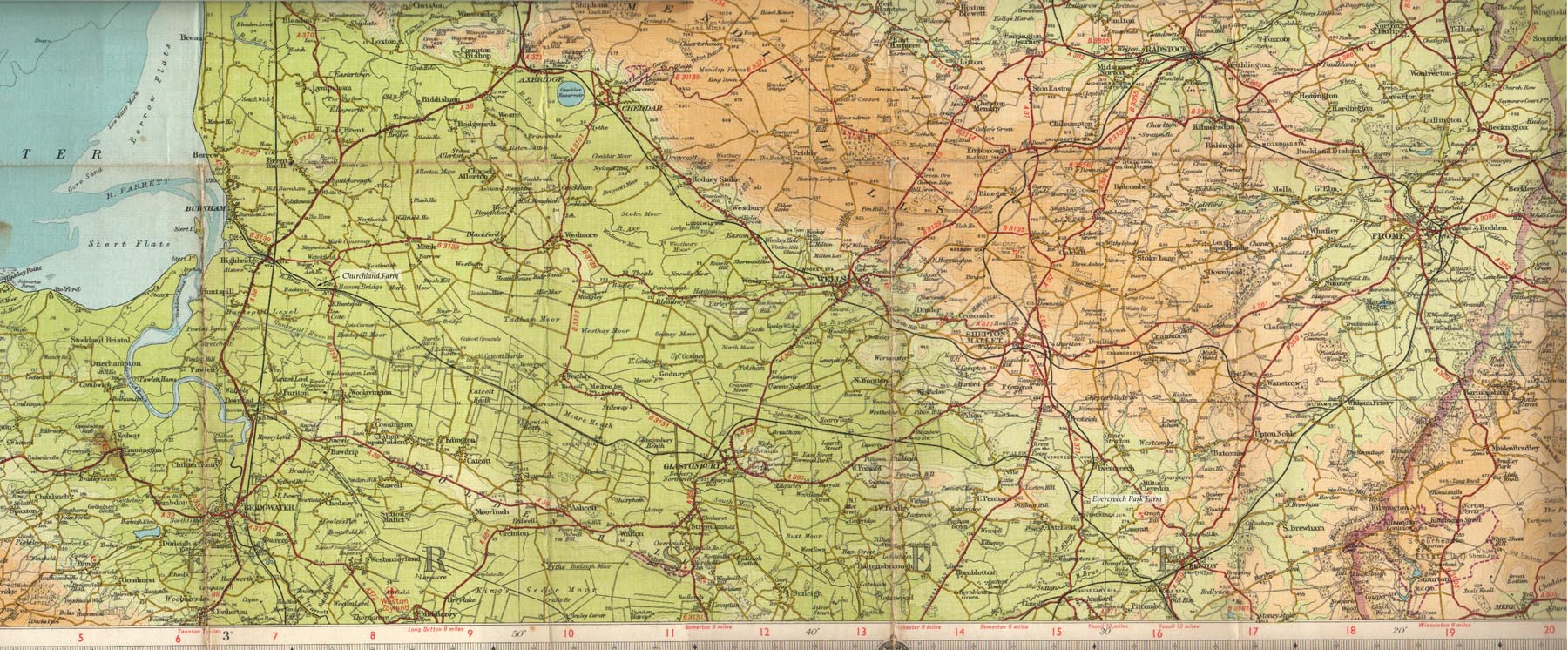
Page updated 24th Apr 2007 with
addition of photos (discovered in Australia!)
Page created 12 Feb 2005